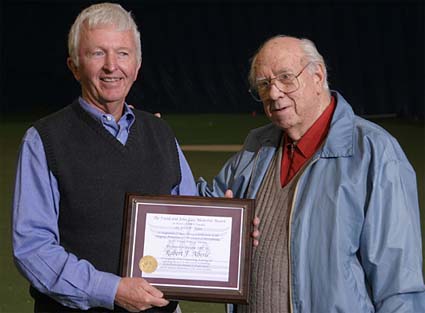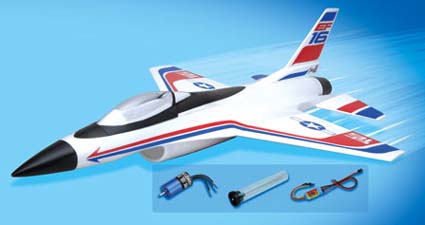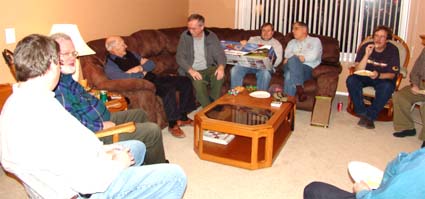 |
Flying High With Electric Power!
The Ampeer ON-LINE!
Fly the Future - Fly Electric! |
Site Table of Contents
| President: | Vice-President: | Secretary/Treasurer: |
| Ken Myers | Richard Utkan | Rick Sawicki |
| 1911 Bradshaw Ct. | 240 Cabinet | 5089 Ledgewood Ct. W. |
| Walled Lake, MI 48390 | Milford, MI 48381 | Commerce Twp., MI 48382 |
| (248) 669-8124 | (248) 685-1705 | 248.685.7056 |
 | ||
| Board of Directors: | Board of Directors: | Ampeer Editor |
| David Stacer | Jack Lemon | Ken Myers |
| 16575 Brookland Blvd. | 8908 Sandy Ridge Dr. | 1911 Bradshaw Ct. |
| Northville, MI 48167 | White Lake, MI 48386 | Walled Lake, MI 48390 |
| 248.924.2324 | 248.698.4683 | 248.669.8124 |
| Mailed Ampeer subscriptions are $15 a year US & Canada and $20 a year world wide. FREE on-line! | ||
| The Next Meeting: Date: Thursday, Jan.10 Time: 7:30 p.m. Place Jim Young's House (see info in this issue) | ||
|
With lots of new "stuff!" Charge into a Great Year! Ken Myers 1911 Bradshaw Ct. Walled Lake, MI 48390 Phone: 248-669-8124 Ampeer Paper Subscriber Reminder When subscribing to or renewing the paper version of the Ampeer, please make the check payable to Ken Myers. We do not have a DBA for the Ampeer or EFO. Thanks, Ken
In November 2007, Bob Aberle was presented with The Frank and John Zaic Memorial Award at the 5th Annual JR Electric Indoor Festival held in Columbus, OH. The Award Reads: In Honor of AMA Founder Lt. John W. Alden In recognition of extraordinary contributions to the Progress, Promotion, or Preservation of Aeromodeling In the United States of America Presented in the year 2007 to Robert F. Aberle For exceptional service in maintaining, furthering, and expanding the cause of radio control aeromodeling for the benefit and enjoyment of all participants and the technical advancement of the science involved. Congratulations Bob! Very well deserved! Thanks for all of your work and dedication to every facet of this hobby, Ken and the EFO. How Much Better Are the "Better" Outrunners?
Recently, Jim Kroger, of New Mexico and I exchanged some emails on this topic. Here are my current thoughts on this topic. JK: I got started on your "One Way of Selecting a Brushless Outrunner Electric Motor" article. (homepage.mac.com/kmyersefo/M1-outrunners.htm) I have a question. With the TowerPro, and the HXT, you appear to focus on relatively inexpensive motors. This is laudable, with the several planes a hobbyist may have, it's sensible. KM: That was the point of these motors, and you got it! I spent a lot of time in 2006 and 2007 trying to come up with inexpensive planes and power systems and share that information with the members of the general RC club I belong to, Midwest RC Society. I wanted to show them that I can put a good performing sport plane in the air in the "40" size without spending an arm and a leg when using electric power. I also wanted to show the members of the EFO that they can start flying "40" size planes for about the same cost as the smaller electrics many members are currently flying. I have to say that I believe that I was reasonably successful on both counts as a few of the Midwest RC Society guys are now working on "40" and "60" size electrics and at least two of the EFO members have "40" size winter projects started already. JK: However, in the case of the HXT, it seems like a tradeoff is inefficiency. This is a guess on my part, but it seems that if you opted for a more expensive motor, like an AXI, Hacker, even a Neu, or even a mid-priced option like an E-flite, Scorpion, or Himax, that you would gain a lot in performance and flight duration from better efficiency (again I'm guessing that the HXT is inefficient because it's cheap). KM: Somewhat true, but... read on. JK: Is it that these companies just don't make such a motor? KM: That is part of the problem. For example, the TowerPro/BP Hobbies 3520-7 and -6 fall in cracks between the "big guys", and I'll come back to that in a bit. KM: Let's look at the HXT 42-60/06 compared with some others. (Note: United Hobbies has replaced this motor with one now known as the Turnigy 42-60 500Kv 900W Outrunner for $35.95. This note appeared in a thread on RC Groups. It is from UH/HC to a member by the ID of scrapster: "Hello.
The original thread about Turnigy is located here: www.rcgroups.com/forums/showthread.php?t=772872 My review of the HXT 42-60/06 is located here: homepage.mac.com/kmyersefo/hxt42-60-06.htm Keep in mind that "better" efficiency can be used in two ways. It may be used to swing a larger diameter prop or larger pitched prop at the same amp draw, or the extra efficiency can be used to swing the same prop at a lower amp draw.
Kontronik Kora TOP 20-14W, weight 319g, 17.38v, 37.3 amps, 7856 RPM, static thrust 105 oz., 649 watts in, 556 watts out, pitch speed 63 mph, system eff. 85.7%, Kv ~503, Price - $199.00US AXI 4120/18 (the one in the DC data base), weight 305g, 17.44v, 36.4 amps, 7750 RPM, static thrust 102 oz.635 watts in, 533 watts out, pitch speed 62 mph, system eff. 83.9%, Kv ~509, Price - $129.90US Neumotors 1506/3D 6.7:1, weight 237g, 17.38v, 37.3 amps, 7785 RPM, static thrust 103 oz., 649 watts in, 540 watts out, pitch speed 63 mph, system eff. 83.3%, Kv ~498, Price - $185.00US plus gearbox AXI 4120/18 (mine), weight 315g, 17.54v, 34.9 amps, 7608 RPM, static thrust 98 oz., 612 watts in, 502 watts out, pitch speed 61 mph, system eff. 82%, Kv ~509, Price - $129.90US HXT 50-55B, weight 300g, 17.57v, 34.4 amps, 7483 RPM, static thrust 95 oz., 604 watts in, 476 watts out, pitch speed 60 mph, system eff. 78.8%, Kv ~503, Price - $42.33US Note! This is not the one that is being sold now. The current one has a Kv of about 600. Kontronik Kora 25-12, weight 220g, 17.23v, 39.6 amps, 7735 RPM, static thrust 101 oz., 683 watts in, 529 watts out, pitch speed 62 mph, system eff. 77.4%, Kv ~555, Price - $144.00US HXT 42-60/06 500Kv 1-deg timing, 264g, 17.33v, 38.1 amps, 7464 RPM, static thrust 94 oz., 660 watts in, 472 watts out, pitch speed 60 mph, system eff. 71.6%, Kv ~550, Price $35.95 - see note about renaming this motor above HXT 42-60/06 500Kv 15-deg timing, 264g, 17.26v, 39.2 amps, 7487 RPM, static thrust 95 oz., 677 watts in, 478 watts out, pitch speed 60 mph, system eff. 70.4%, ~565, Price $35.95 - see note about renaming this motor above Even though the "original" HXT 42-60/06 is not available, its replacement should be close to identical in performance, so it can be used to compare it to the Kontronik Kora TOP 20-14W. The price difference is now about $163US. For that amount of money you get ~390 more RPM or an increase in pitch speed of about 3 mph. I'm not sure that I would notice the difference. The static thrust difference is about 11 oz. That may or may not be noticeable. The wide-open throttle amp draw decreases by about 0.8 amps. I don't believe that I would notice the difference in the flight time, as both would probably average very close to the same. Other motors in this group may be compared this way and you can see whether one is worth more to you than the other. To me, there doesn't appear to be a huge difference. JK: This leads to a second question: you stated "The equivalent AXI designation would be a 3530/06, if it existed." Is there a formula for AXI's designations? KM: No, AXI, Scorpion, TowerPro, Hyperion and some others use the stator diameter in mm and stator length to describe their motors. It seems that others, including the ones marketed using the HXT/Turnigy designation and ElectriFly use the outside dimensions in mm using the outside diameter and total case length. For example, using the outside dimensions the TowerPro 3520, it would be designated a 4650.
Follow-up: JK: Whew, this is complicated stuff. Increasing the Kv with ESC timing will reduce efficiency. But that stands to reason, since a lower Kv motor swinging a bigger prop is more efficient. So why use any advance at all? KM: As I understand it, timing was/is used with brushed motors to reduce the pitting of the commutator and chipping of the brushes when running at high power levels caused by trailing edge fire. It was/is only effective when the motor is run at mostly wide-open throttle. It was/is used in limited/timed motor run events where the plane has a limited amount of motor run time to get to maximum gliding altitude and the motor is not used again. The events are mostly for gliders and old timers. It had the side benefit of increasing the power out and rpm to the detriment of efficiency, but since the motor was/is only used for 30 seconds or so, it didn't/doesn't matter. Timing advance is used to increase the power of two types of brushless motors. There seems to be a large segment of the hobby that likes to get as much "power" from as little battery as possible, because of the cost of lithium polymer (Li-Poly/Li-Po) batteries. Obviously, a 3S (three cells in series) Li-Po is going to be cheaper than a 4S, 5S, etc. of the same quality. A 3S will also be lighter than a 4S, 5S, etc. If a person wants to fly a 4 lb. 3D plane they want the lightest airframe and power system possible. They'll need about 600 watts in (150 watts in per pound or greater) to fly their mission. They want a very light wing loading/cubic wing loading. To get their 600 watts they'd use a motor capable of 600 watts in, a 3S Li-Po that can handle the almost 60-amp wide-open throttle current required and an appropriate ESC. They'd also fly with some form of advanced timing to get that last little bit of power. Even though the WOT amp draw is high, the flight times are good, since a lot of time is spent at part throttle. Part throttle does not lower the amp draw, it just leaves the ESC's "off time" on longer, so the transistors spend more time in the off state than the on state and the "average" amp draw is lower.
JK: How different are the HXT 42-60/06 and the TowerPro 3520-7? I guess it doesn't matter since the HXT is no longer available, but just curious. (Yes, it is, but we weren't aware of it when exchanging our emails. KM) KM: The TowerPr0 3520-7 is about a 600 Kv motor and the HXT 42-60/06 is about a 550 Kv motor. That means that on the same battery the HXT can swing a larger diameter prop a little slower than the TP motor. When I used the 3520-7 with a 6S M1 pack, to keep the amp draw about 35 amps, the largest prop I could use was an APC 12x7 sport at about 9000 RPM for a pitch speed of about 60 mph. Drive Calculator estimates that with that prop the thrust is about 90 oz..
I'm now using the same battery with the HXT motor in the same plane but using an APC 14x8.5E at a 37 amps draw. Even though the RPM is down to about 7400, it still yields a pitch speed of 60 mph due to the higher pitch, but it has more thrust due to the two-inch increase in diameter. Drive Calculator estimates 95 oz. of thrust. With the power (watts in) staying basically the same, the performance went up. Why? Obviously, if the watts in are about the same, the only thing that has changed is the propeller.
A Bingo 20, Hyperion & Scorpion Motors and More
(For the past few weeks Dan and I have been communicating on several topics. I have rearranged some of his correspondence to create the following. KM) I thought you would like to know my experience with Hyperion motors. I just purchased my 3rd Hyperion motor.
I purchased a Scorpion S3020-12 for my present project, a Bingo 20. The Bingo 20 has a 49-inch wingspan with 440 sq.in. of wing area and an all up weight (AUW) of about 48 oz. At the beginning of the maiden flight of the Bingo 20, my test pilot got the plane about five feet in the air and it started proposing, maybe three or four times before hitting the ground. After the crash, I made the following changes. 1. Moved the CG up to 25% instead of 30%. It was 2 3/4", now it is 2 1/4". 2. Reduce the elevator throws from 3/8Ó to somewhere between 1/4" and 5/16" 3. Put some UP trim in the elevator 4. Have -30% expo. in the elevator, but I might go 50% Upon examination, after the crash, the Scorpion motor looked OK. It seems like the Scorpion passed the crashed test. Following the repair and adjustments, the plane flew just like it's supposed too. There were NO problems whatsoever, what a relief. It looks like the main problem was the CG. I had to add about 3-4 oz. of weight to the front end, to get the CG at 25%. I also put some wing saddle tape on the wing saddle to take up for the wing movement. The final weight came out around 52 oz. The Scorpion motor worked fine after the crash, with a Grayson 3S1P 4100mAh Li-Po. I've been flying the Bingo 20 using the Grayson Battery. 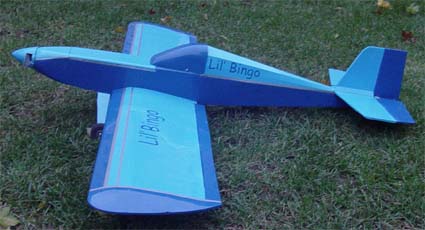 My color scheme for the Bingo 20 looks great on the ground, but in the air, orientation can be a problem. Both my test pilot and I lost IT for few seconds the other day. www.innov8tivedesigns.com/product_info.php?cPath=21_25_38&products_id=76 I bench tested the Scorpion S3020-12, and numbers were higher then those at the Scorpion web site. Here is what I got. It seems like the battery does make a difference. My numbers were close to Lucien, maybe a tad higher. I thought you would like to know the number's I got with the Scorpion S3020-12 using the Scorpion 55 amp ESC and an APC 10x5E.
More Motor/Battery Info
GraysonPower 3S1P 4100mAh Battery
(Your numbers are pretty close to what Lucien has posted. I believe that part of the difference is that, unfortunately, Lucien used an "old" APC 10x7E when he was doing is motor tests and therefore got lower amp draws and higher RPM than the current version of the APC 10x7E. KM) Thoughts on GraysonPower Li-Po Batteries
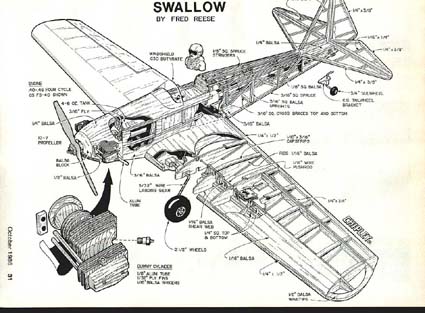 I also have plans from the AMA plans service for a plane called the Swallow. It's a 1986 Fred Reese design. This plane is the predecessor to the Cloud Dancer line. It has a wingspan of 58" and flying weight with a glow 40 of about 3 lb. 7oz. I just might keep this one full size. Phase 3 Models EF16 EDF
With its lightweight foam construction and simple taileron control (all-flying tail plane halves), you get a highly manoeuvrable model that's docile and controllable at low speeds too.
SHOPPING:
WHAT YOU GET:
ADHESIVES:
ASSEMBLY:
FLYING:
CONCLUSION:
Mike Southwood
Note for USA modelers:
Weights of Various Covering Materials (Over the years I have published covering weights several times in the Ampeer. Here's the latest I've found. KM) On an earlier thread I (Ron) posted some links for covering weights, they were compiled by independent testers (listed below) using a variety of measuring standards like Oz/sq/yard, Gr/Sq/Meter, etc, making it hard to compare them accurately. Well, I sent'em all through the online converter and changed them all to "Grams per Square Foot". Why? Because it's easy. Most kits and plans (in the U.S.) supply wing area in square inches and we all know that 1 square foot= 144 square inches, right? Anyway, here they are, lightest to heaviest from the top. Some of the sites differed by a small amount so I converted those to a "Range" and for a couple of samples there already was a "range" of weights, since some of the colors are heavier than others. For further descriptions see the links on the earlier post. www.wattflyer.com/forums/showthread.php?t=10278 Weights in Grams per square foot. Produce Bags (Thin Plastic, From Target) 0.53 (See Post # 18, 24)
Thanks again to Paul Daniels, Fatlion (Fritz Bien + Herm Perez), Barry's Aircraft Page, Warden, Twmaster, JoJa15, David Lewis and Modelflight.com!
Ron Upcoming Event of Interest Skymasters R/C of Michigan would like to welcome your club to join us for: Spread "Spektrum" Featuring a discussion with John Adams the Technical Director Spektrum at Horizon Hobby. Come learn everything you wanted to know about: Spread Spectrum Technology with a Presentation, Hands On, and Q&A. The Location is Larson Middle School, 2222 E. Long Lake (18 Mile), Troy, MI 48085 Free Admission! All Welcome!!! It is sure to be an interesting evening!
The December 2007 EFO Meeting
The first "winter" meeting of the EFO was held at Ken Myers' house on Thursday December 6. The meeting was very well attended and everyone had a good time sharing plane information and just talking about models and full-scale planes. 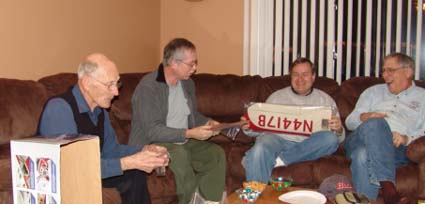 Bill Brown brought his brand-new, still in the box E-flite Taylorcraft 450 ARF. Bill passed around the parts and the members agreed that it looked well made and to be of good quality. Some of the specifications are:
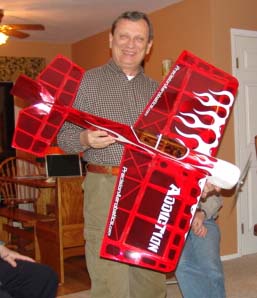 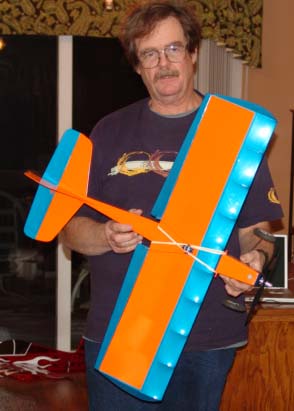 James Maughan brought along is almost completed Mountain Models Dandy GT. This is James' second Dandy GT. He gave his first one to a deserving young flier who didn't have a plane. He liked the plane so much he just had to have another!
Ken Myers demonstrated the CellMeter-8 from Hobby Lobby. This electronic unit measures each cell's voltage and displays the voltage. It also shows "how full" the pack is and how well balanced the cells are. He demonstrated it using a "good" pack and one that was known to be "out of balance." When a pack's voltage is too low or the cell's are too far out of balance, and alarm sounds on the unit. There are full reviews of this unit in the February 2008 FlyRC and on RC Groups at www.rcgroups.com/forums/showthread.php?t=765289&highlight=CellMeter.
It was a good night of sharing and comradeship! The Upcoming January 2008 EFO Meeting The January meeting will be held at Jim Young's house. It will be on the SECOND Thursday of the month, January 10, 2008! Jim lives at 9356 Wendover Ct., Brighton, MI 48116.
A. Merge onto US-23 S via EXIT 148A toward ANN ARBOR. 4.1 miles B. Take the SILVER LAKE RD exit- EXIT 55. 0.2 miles C. Turn RIGHT onto SILVER LAKE RD., <0.1 miles D. Turn LEFT onto WHITMORE LAKE RD. 0.1 miles E. Turn RIGHT onto WINANS LAKE RD., 0.5 miles F. Turn RIGHT onto RICKETT RD. 0.2 miles G. Turn LEFT onto BONAVENTURE DR. 0.1 miles H. Turn LEFT onto WENDOVER CT. <0.1 miles I. End at 9356 Wendover Ct E-flight calculators (compilation)
1. D-calc, Christian Persson (English & German)
And from Louis Fourdan
Also from Jim Blanner
|
To Reach Ken Myers, you can land mail to the address at the top of the page. My E-mail
address is:
KMyersEFO@mac.com
EFO WEBsite: http://members.aol.com/KMyersEFO/
